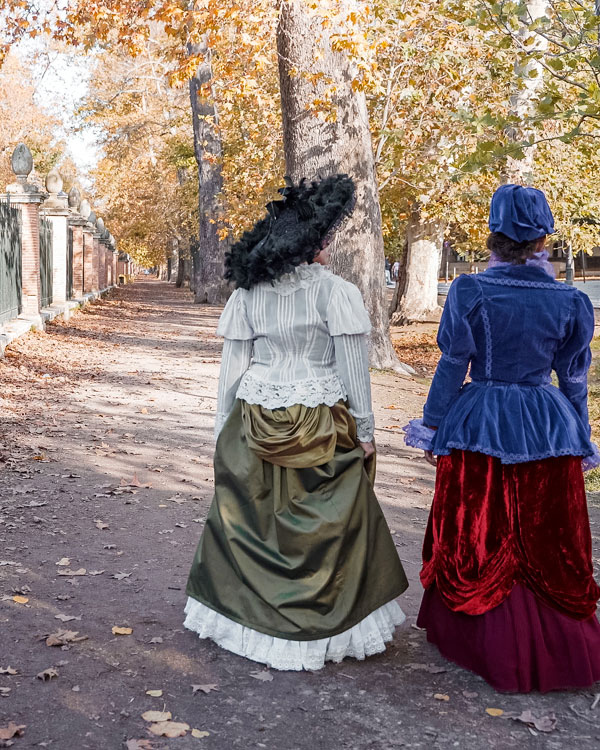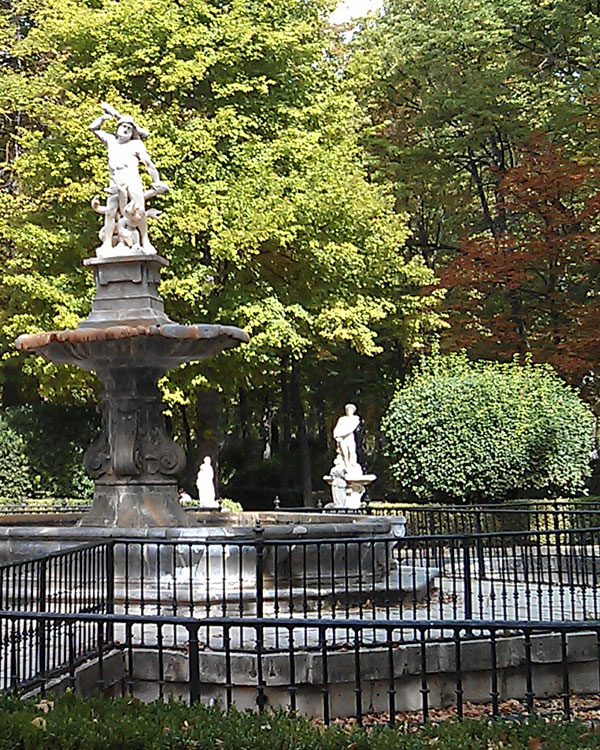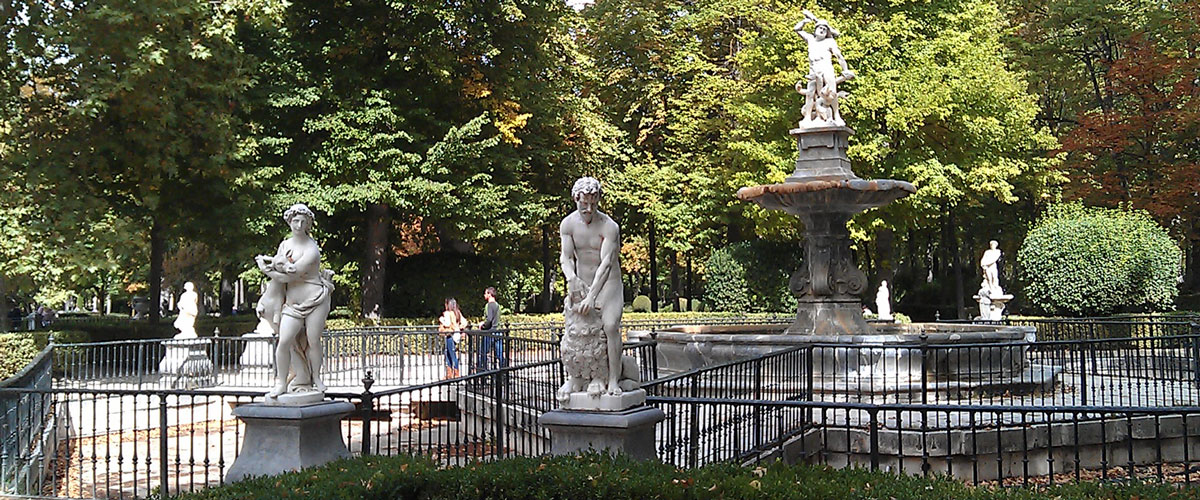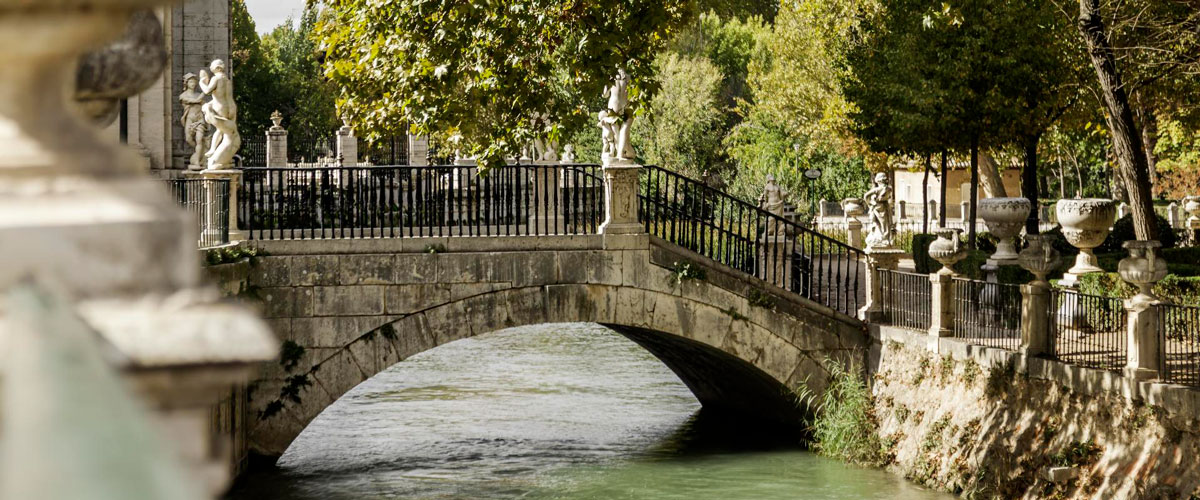
Historical gardens
One of the most important contributions of the Habsburgs was
the development of hydraulic infrastructures linked to the Tagus
River. These, in addition to expanding the irrigable areas of
the Aranjuez orchard, allowed for the creation of large gardens
designed by illustrious landscape gardeners who, from the reign
of Philip II to the present day, have contributed to its
development and grandeur.
But without a doubt, the gardens of the Island, Parterre and the
Prince stand out. They are of very different styles but linked
by the multitude of plant species brought from the five
continents and the significant collection of fountains, which
often remind us of mythological stories in their sculptural
ensembles.
The Prince's Garden, commissioned by Charles IV, stands
out for its extension of 145 hectares. It is the largest
enclosed garden in Europe and is framed by the Tagus River and 3
km of fence with a monumental metal grille marked by two large
gates.
Unique spaces are enclosed within it, such as the Royal Pier
and the Casa del Labrador mansion. The Royal Pier has a
dock on the river that resembles a fortified port, and behind it,
there are four small pavilions for the royal festivities linked
to the river routes. For its part, the Casa de Labrador is a
curious leisure palace; it does not have bedrooms, only rooms
for events. It was a proposal by Charles I that Charles IV
brought to its maximum splendor.
The Prince's Garden is arranged in long avenues between
roundabouts, with monumental fountains and recreational lakes,
such as the Chinescos lake. These spaces of monumental
gardening are wrapped in large plots where fruit trees of all
kinds thrive, and even an area of "stoves", a type of greenhouse
where plants grow that later settle in the gardens. It has the "great
banana tree", a monumental singular tree that is 255 years old,
42 meters high and 7 meters in perimeter.


Next to it, on an artificial island created in the Tagus, is the Garden of the Island. It is a Renaissance garden with a high monumental density and with the constant sound of the Cascada de la Castañuela. There is a series of small fountains hidden in a network of narrow paths enclosed between the Tagus and its channel, which feeds this monumental and resounding waterfall. Two bridges connect the garden with the Parterre Garden and the rest of the city, and the collection of small monumental fountains, loaded with mythological references, is well worth a leisurely visit.
Next to them, there are charming, small landscaped spaces, such as the gardens of the King and the Queen, attached to the Royal Palace itself. In addition to these small palace gardens, we should take note of the urban one of Isabella II: the first garden intended not for kings and nobles, but for residents.
Outside the urban space, the Sotos del Rey Felipe II constitute one of the most valuable organized agricultural spaces in the country. Around the arbor of the 12 streets, there are large avenues flanked by towering trees. It is an orderly landscape of vast dimensions, covering a good section of the north bank of the Tagus, almost reaching its confluence with the Jarama. Among its singularities, it was home to a racecourse that hosted races of certain renown—Legamarejo—, which had its greatest splendor between 1916 and 1934, and was later closed and reparceled. It is also home to the Azuda de La Montaña, a spectacular recently restored 18th-century waterwheel.
The Tagus
The history of Aranjuez is the chronicle of the effort to
understand and dominate the Tagus.
The main architect of the Aranjuez landscape is the water itself.
This water is brought by the Tagus and its tributary, the
Jarama, and it is in this interfluve plain where its fickle
channels, with changing meanders, hydrated and fertilized the
land, filling the valley with riparian forests and wetlands that
would later become the gardens and the orchard we know today. A
dense network of canals opens up on the right bank of the Tagus
from the Embocador reservoir, a recently restored 16th-century
dam that was the key to the agricultural development of this
plain. The Azuda canal is born from its waters, running into the
La Montaña canal and irrigating all the orchards. Even taking
advantage of the Azuda, the historic waterwheel, it irrigated
orchards located on a higher level.
Dikes and ditches controlled the floods and made the section
closest to the town navigable. A royal wharf was built for the
Bourbon fluvial squadron, those barges that crossed the river
while the courtiers listened to music. Next to the wharf, the
Riverboat Museum conserves those baroque ships and other
elements.
Until the 1960s, this same section was the arrival point for
thousands of felled logs in the remote Serranía de Cuenca, which
descended to Aranjuez in spectacular woods grazed by gancheros.
Currently, the Tagus continues to be the focal point of numerous
recreational and sports activities. Its canoeing club achieves
international success, and once a year it surprises us by
filling up with a multitude of fun craft boats in the unique "Pirate
Descent of the Tajo".
